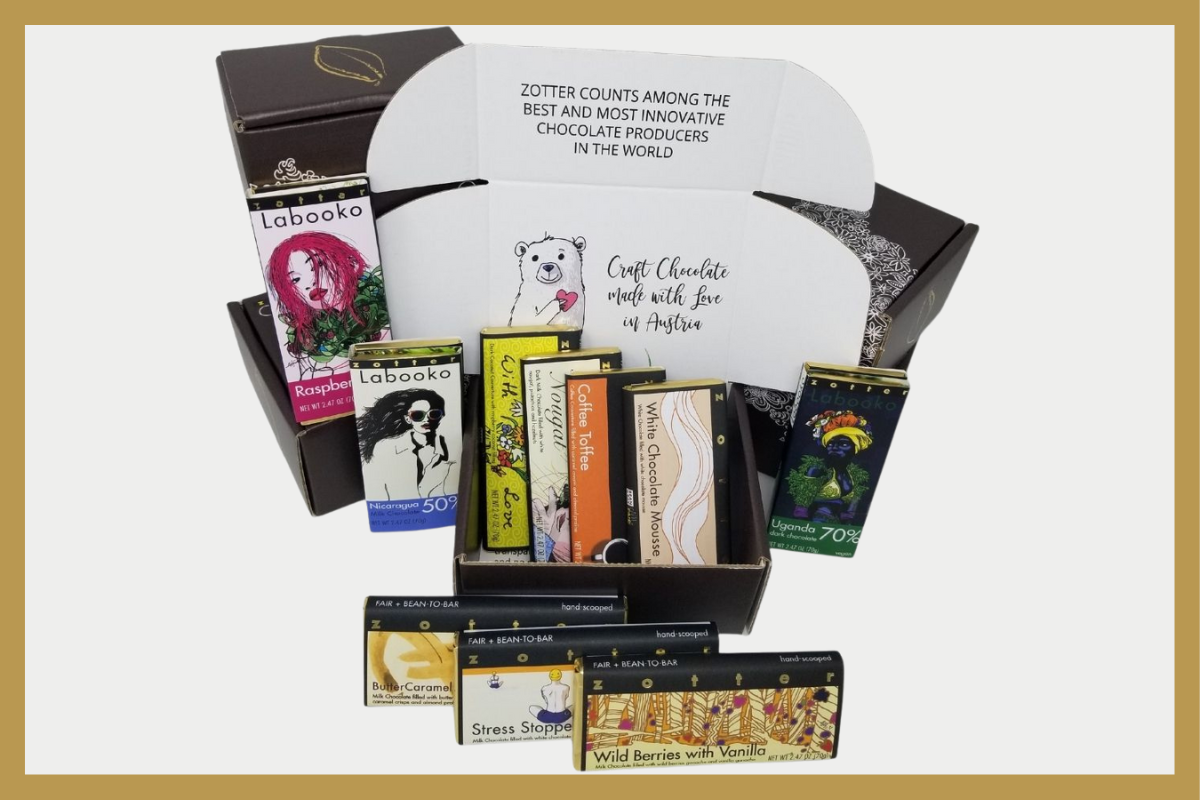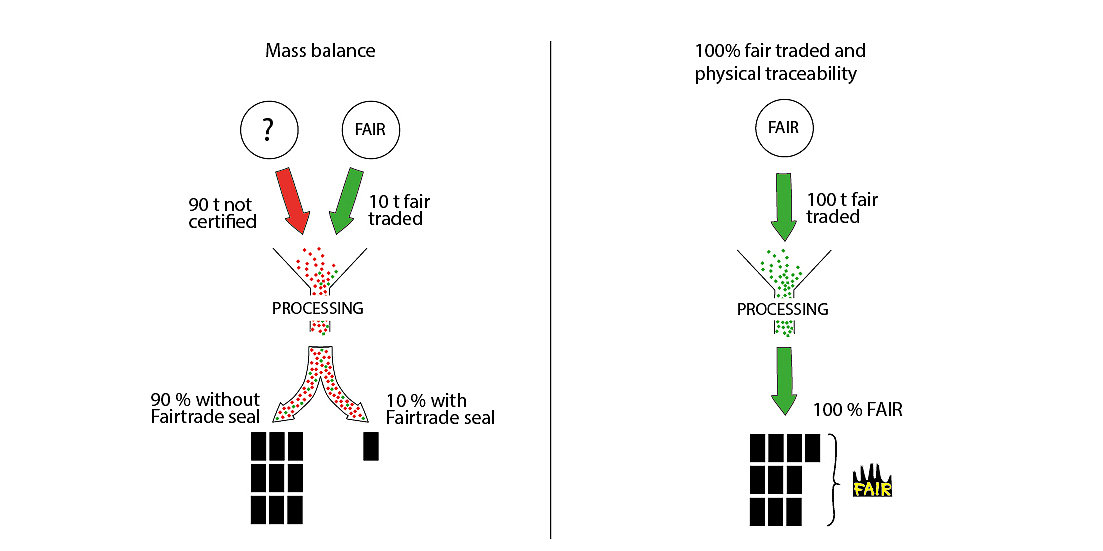NEW FAIR LOGO
We are 100% organic and fair trade as well as bean to bar and we apply our new FAIR hand sign. We are a member of the World Fair Trade Organization (WFTO). The WFTO will audit our entire business according to its fair-trade guidelines. 100% fair trade, without mass balance supply chain application, which we think is less than ideal.
Josef Zotter: “In my opinion, the FAIRTRADE certification is generally a good idea and certainly better than no oversight at all, but I want my customers to be able to buy chocolate and know that it contains exactly what it says on the wrapper.”
New paths: our commitment to fair trade and transparency
The new chocolate season is starting – and we are walking down new paths of development. We are evolving in line with our strong and exclusive commitment to fair-trade practices, which are only possible through full transparency. Farmers have to be compensated fairly for their hard work so that customers at the other end of the production and supply chain can enjoy the fruits of their labor with a clear conscience.
But that’s not enough – the chocolate also has to offer a flavor superior to garden-variety alternatives, otherwise there is no sustainable incentive at all for more responsible consumer behavior. This is why getting to know the source and producer of any given ingredient is an absolute priority to Zotter in his quest to foster excellent direct trade relations. We are proud of the fact that our partners know exactly who they work for. This nurtures mutual trust and opens doors to the most exclusive and superior raw materials. A win-win situation for everyone from farmer to customer. However, this is only the case with physical traceability and not with mass balance.
Mass balance: how it works and why we don’t need it
The goal is, of course, for every single product on earth to be traded fairly, which is why FAIRTRADE is accessing ever bigger markets to make fair-trade products more accessible to consumers. This is great in principle. However, this process necessitates compromise and this leads us to the mass balance supply chain model. It means, in a nutshell, that the general amount of ingredients needed for any given fair-trade product have to show a fair-trade certification, but that doesn’t mean they are IN the actual end product, as it is allowed to mix them during processing. Here’s an example: a chocolate producer buys fair-trade cocoa for 10 bars of chocolate and conventional, uncertified cocoa for 90 bars. The cocoa is mixed, 100 bars are produced. 10 of those bars carry the FAIRTRADE logo, even though, in theory, each of the 100 bars could contain 10% fair-trade and 90% uncertified cocoa beans. We don’t approve of this method. We are a quality chocolate producer with a focus on transparency, and this is anything but. We believe that customers who buy fair-trade products and are willing to pay a higher price for them should get a guarantee that those products contain fair-trade ingredients. Mass-balanced products usually carry a disclaimer but that’s not enough for us. We want to offer clarity and transparency to our customers and therefore enforce physical traceability, which allows us to guarantee that it is in it, what’s stated on the packaging.




